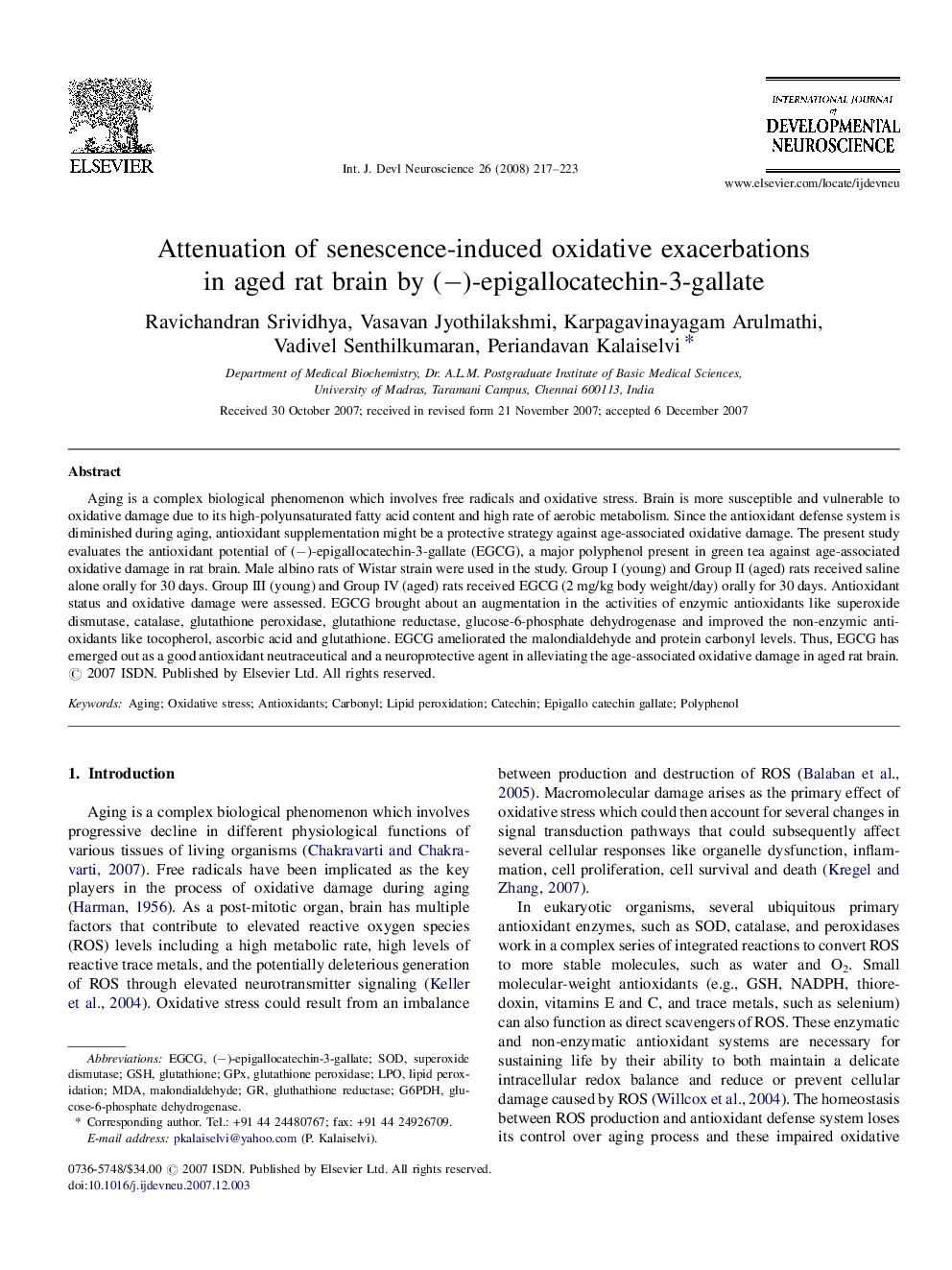| Article ID | Journal | Published Year | Pages | File Type |
|---|---|---|---|---|
| 2787094 | International Journal of Developmental Neuroscience | 2008 | 7 Pages |
Aging is a complex biological phenomenon which involves free radicals and oxidative stress. Brain is more susceptible and vulnerable to oxidative damage due to its high-polyunsaturated fatty acid content and high rate of aerobic metabolism. Since the antioxidant defense system is diminished during aging, antioxidant supplementation might be a protective strategy against age-associated oxidative damage. The present study evaluates the antioxidant potential of (−)-epigallocatechin-3-gallate (EGCG), a major polyphenol present in green tea against age-associated oxidative damage in rat brain. Male albino rats of Wistar strain were used in the study. Group I (young) and Group II (aged) rats received saline alone orally for 30 days. Group III (young) and Group IV (aged) rats received EGCG (2 mg/kg body weight/day) orally for 30 days. Antioxidant status and oxidative damage were assessed. EGCG brought about an augmentation in the activities of enzymic antioxidants like superoxide dismutase, catalase, glutathione peroxidase, glutathione reductase, glucose-6-phosphate dehydrogenase and improved the non-enzymic antioxidants like tocopherol, ascorbic acid and glutathione. EGCG ameliorated the malondialdehyde and protein carbonyl levels. Thus, EGCG has emerged out as a good antioxidant neutraceutical and a neuroprotective agent in alleviating the age-associated oxidative damage in aged rat brain.
